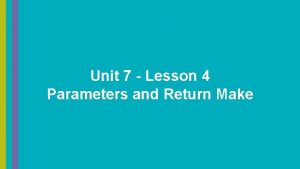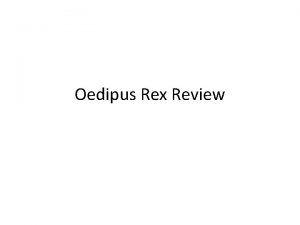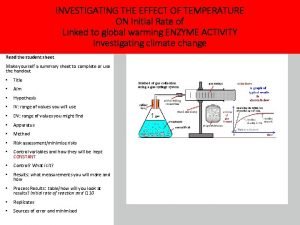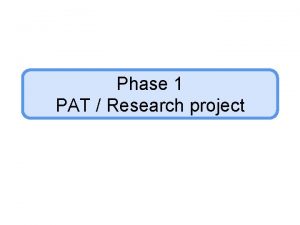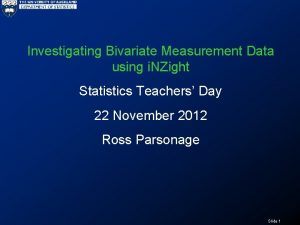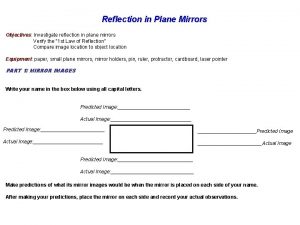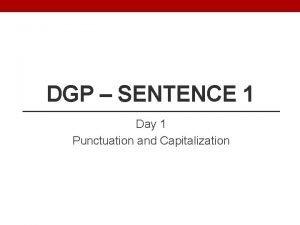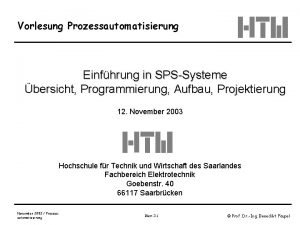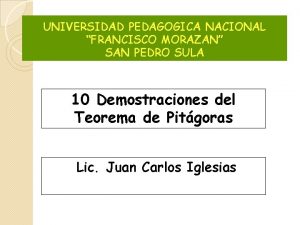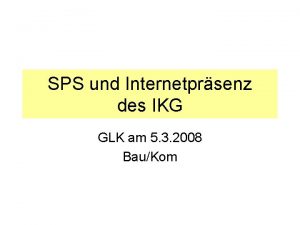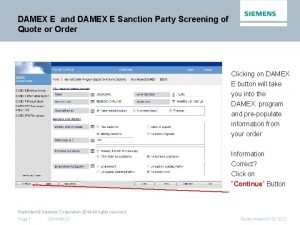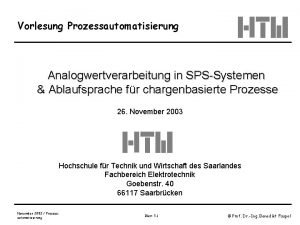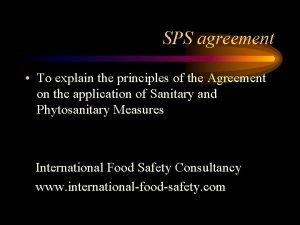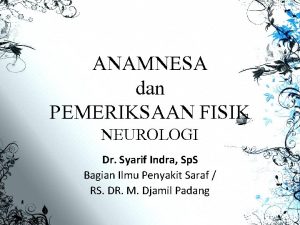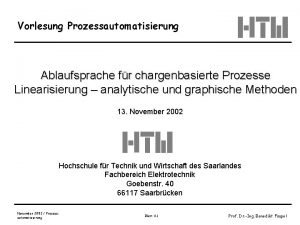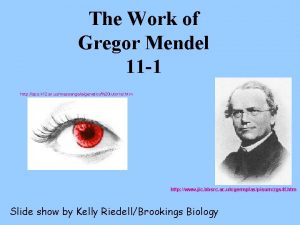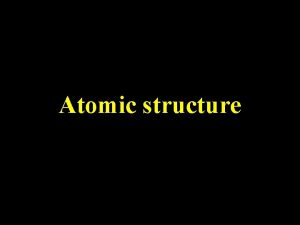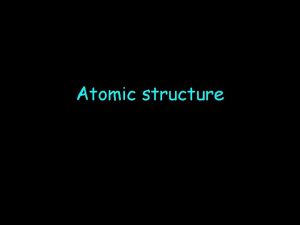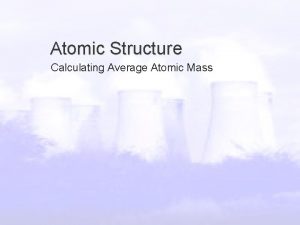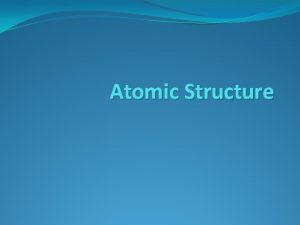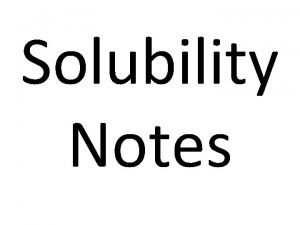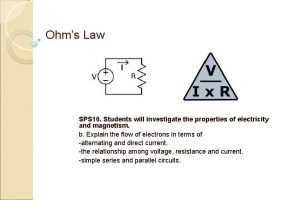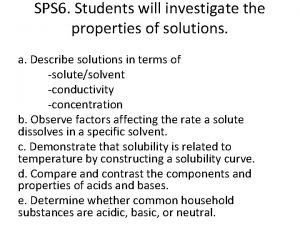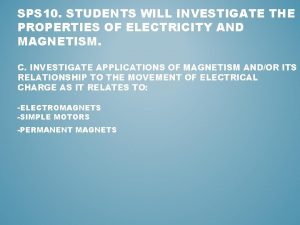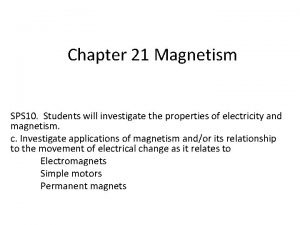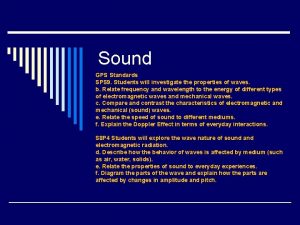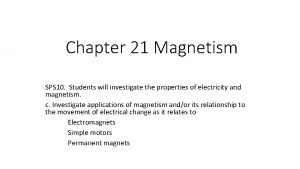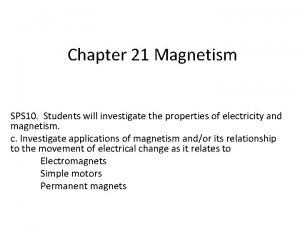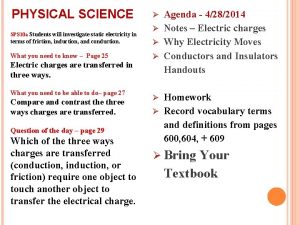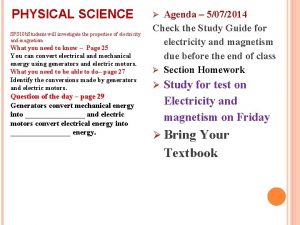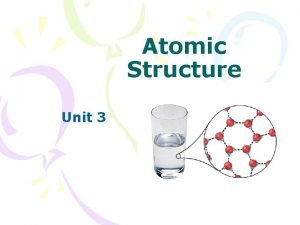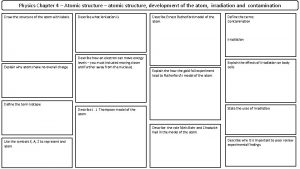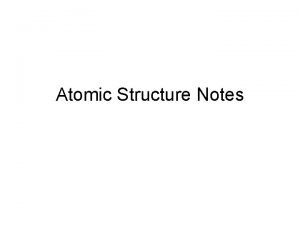Atomic Structure SPS 1 Students will investigate our

















































- Slides: 49


Atomic Structure SPS 1. Students will investigate our current understanding of the atom. a. Examine the structure of the atom in terms of – proton, electron, and neutron locations. – atomic mass and atomic number. – atoms with different numbers of neutrons (isotopes). – explain the relationship of the proton number to the element’s identity.

Characteristics of the Subatomic Particles Particle Neutron n 0 Proton p+ Electron e- Location nucleus Electron cloud in energy levels Mass Charge 1 atomic mass unit (AMU) Neutral 0 1 AMU Positive +1 0 Negative -1

Carbon e- e- enucleus p+ p+ n 0 n 0 p+ n 0 Electron cloud p+ p+ ee- e-

How to read a Periodic Table Tile 4 Atomic Number of protons Atoms identity Be Element Symbol Beryllium Element Name 9. 01 Atomic Mass = # p+ and # n 0

How to Determine the Number of Subatomic Particles Subatomic Particle Neutron Proton Electron How to Find the Number of Particles = atomic mass – atomic number = # p+ if the atom is neutral

Name Symbol p+ n 0 e- Hydrogen H 1 0 1 Sodium Na 11 12 11 Boron B 5 6 5 Neon Ne 10 10 10 Aluminum Al 13 14 13 Sulfur S 16 16 16

Neutron n 0 0 Neutral = atomic mass – atomic # 1 AMU Proton Nucleus Subatomic Particles p+ +1 Positive Charged Particles = atomic # Identity of the element Electron e- -1 Negative 0 AMU Located in the e- cloud

Activator Draw the periodic table tile and label the atomic number and mass number. How do you determine the number of protons? How do you determine the number of neutrons? What number represents the identity of the element? 17 Cl Chlorine 35. 453


Activator • How do you calculate the number of protons in an element? • How do you calculate the number of neutrons in an element? • How do you calculate the number of electrons in an element?

Activator Particle Neutron Proton Electron Location Mass Charge

Write the questions 1. You have 18 protons, 18 electrons and 23 neutrons, which element do you have? How do you know? Ar because of 18 protons 2. You have 4 protons, 4 electrons and 5 neutrons, which element do you have? How do you know? Be because of 4 protons 3. What is the atomic number of Ca? 20 4. What is the atomic mass of Ar? 39. 948

5. If you have a neutral atom, you have an protons electrons equal number of ______ and _______. 6. How do you determine the number of neutrons? Atomic mass – Atomic number 7. What is the mass of an electron? 0 AMU 8. A neutral atom of sodium has 11 protons, how many electrons does it have? 11

9. What subatomic particles are located in the nucleus? Protons and Neutrons 10. What does the atomic number tell you? # protons and # electrons, if neutral 11. What does the mass number tell you? # protons + # neutrons or it is equal to the # of subatomic particles found in the nucleus 12. Atoms of the same element must have protons the same number of _____.

13. A scientist has found the following isotope of Oxygen: 198 O. How many neutrons does it have? 11 14. How many electrons are on the: – – 1 st energy level? 2 nd energy level? 3 rd energy level? 4 th energy level? 2 8 8 2, can hold more

Activator • Determine the number of protons, neutrons and electrons in Argon (Ar). • Draw an atom of Argon (Ar).

Summarizer 1. How did you do on the assessment? 2. Which learning activities from this week and last helped you the most? 3. How could the instruction this week or last been better? 4. What concerns do you have about Physical Science?

Quick Review for Quiz 1. Name the 3 subatomic particles and identify where they are located, their mass and their charge. 2. Draw an atom of Fluorine (F) and label the neutrons, protons, electrons, nucleus and energy levels. 3. What is an electron shell configuration?

Activator What is the name and atomic mass of an atom that has 20 neutrons 17 protons 17 electrons

Isotope • Atom of the same element (same number of protons) but has a different number of neutrons and atomic mass.

Isotope Notation • It provides the Atomic mass of an isotope. It is written with the element symbol dash atomic mass. Example H-2. • Memory hint: I-So-Fat same atom just fatter with neutrons

Examples of Isotopes Isotope Name *H-1 H-2 H-3 Atomic Mass Number of of of Protons electrons neutrons

Examples of Isotopes Isotope Name *C-12 C-13 C-14 Atomic Number Mass of of of Protons electrons neutrons

How do you determine the name of an element? • The number of protons in the atom is the atomic number

How do you determine the atomic mass of an isotope? • Add the number of neutrons plus the number of protons.

Name the following isotope using it’s isotope notation. Number of Neutrons 1 Number of Protons 2 Number of Electrons 2 Name of Isotope

Name the following isotope using its isotope notation. Number of Neutrons Number of Protons Number of Electrons Name of Isotope 3 3 3

Name the following isotope using its isotope notation. Number of Neutrons Number of Protons Number of Electrons Name of Isotope 5 5 5

Name the following isotope using it’s isotope notation. Number of Neutrons Number of Protons Number of Electrons Name of Isotope 8 7 7

Name the following isotope using it’s isotope notation. Number of Neutrons Number of Protons Number of Electrons Name of Isotope 9 8 8

Name the following isotope using it’s isotope notation. Number of Neutrons Number of Protons Number of Electrons Name of Isotope 11 10

Name the following isotope using it’s isotope notation. Number of Neutrons Number of Protons Number of Electrons Name of Isotope 14 12

Name the following isotope using it’s isotope notation. Number of Neutrons Number of Protons Number of Electrons Name of Isotope 15 14

Name the following isotope using it’s isotope notation. Number of Neutrons Number of Protons Number of Electrons Name of Isotope 16 14

Name the following isotope using it’s isotope notation. Number of Neutrons Number of Protons Number of Electrons Name of Isotope 17 16 16

Name the following isotope using it’s isotope notation. Number of Neutrons Number of Protons Number of Electrons Name of Isotope 24 20

Name the following isotope using it’s isotope notation. Number of Neutrons Number of Protons Number of Electrons Name of Isotope 22 19

Complete the electron shell configuration for the following elements: C Cl B Mg

Complete the electron shell configuration for the following elements: Ca O O-18 C-14

Activator Write the questions: 1. What is the mass of 9 protons? 2. What is the mass of 11 neutrons? 3. What is the symbol and mass of the above isotope?

Activator Define Isotope in your own words. Draw the following: C-12 H-1 C-13 H-2 C-14 H-3

Summary • Name three things you have learned about isotopes • Name two things you need more practice on with isotopes • Name one thing you do not understand about isotopes

Activator Write the question: An isotope of Hydrogen has an atomic mass of 3. How many subatomic particles are in the nucleus? a. 1 b. 2 c. 3 d. 4

Complete the electron shell configuration for the following atoms: P Ne-21 Si Si-29

Complete the electron shell configuration for the following atoms: O-17 K Ca-44 Be

Identify the following isotopes: Neutrons Protons Electrons Name 28 22 20 17 20 18 30 24 20 16

Identify the following Isotopes: Neutrons Protons Electrons Name 22 20 27 22 20 16 8 6

Summary • List three things you have learned about Isotopes? • List two things you are not yet comfortable with for isotopes. • Is there anything we need to work on some more with isotopes?
 Lesson 4: parameters and return make
Lesson 4: parameters and return make At the beginning of the play oedipus sends creon to
At the beginning of the play oedipus sends creon to Inital rate
Inital rate How to investigate a problem
How to investigate a problem Investigate bivariate measurement data
Investigate bivariate measurement data Investigate reflection
Investigate reflection Relative atomic mass of beryllium
Relative atomic mass of beryllium Radius trend periodic table
Radius trend periodic table Atomic radius periodic trend
Atomic radius periodic trend How do you calculate atomic mass
How do you calculate atomic mass Distinguish between mass number and atomic mass.
Distinguish between mass number and atomic mass. Atomic number vs atomic radius
Atomic number vs atomic radius Vicenta ybardolaza
Vicenta ybardolaza Many students work on the star our school newspaper
Many students work on the star our school newspaper Thinking affects our language, which then affects our:
Thinking affects our language, which then affects our: Our census our future
Our census our future Longing for peace our world is troubled
Longing for peace our world is troubled Marcus aurelius our life is what our thoughts make it
Marcus aurelius our life is what our thoughts make it We bow our hearts we bend our knees
We bow our hearts we bend our knees Our census our future
Our census our future Our life is what our thoughts make it
Our life is what our thoughts make it Summary poem money madness poem
Summary poem money madness poem Our awareness of ourselves and our environment
Our awareness of ourselves and our environment Is our awareness of ourselves and our environment.
Is our awareness of ourselves and our environment. God our father christ our brother
God our father christ our brother Our future is in our hands quotes
Our future is in our hands quotes Awareness of ourselves and our environment
Awareness of ourselves and our environment Awareness of ourselves and our environment is:
Awareness of ourselves and our environment is: Selbsthaltung sps fup
Selbsthaltung sps fup Universidad pedagogica sps
Universidad pedagogica sps Ikg rt
Ikg rt Tbt ims
Tbt ims Sps ims
Sps ims Upm phd graduation requirement
Upm phd graduation requirement Sps program
Sps program Bibct
Bibct Damex sps
Damex sps Cern testing schedule
Cern testing schedule Sps behavioural competency framework
Sps behavioural competency framework Platin herstellung
Platin herstellung Trimble sps 930
Trimble sps 930 Sps roadmap
Sps roadmap Sps principles
Sps principles Sps barriers
Sps barriers Jnjk johor
Jnjk johor Sps t
Sps t Dr syarif indra sps
Dr syarif indra sps Ablaufsprache beispiel
Ablaufsprache beispiel Mendels sps
Mendels sps Sps intranets
Sps intranets
